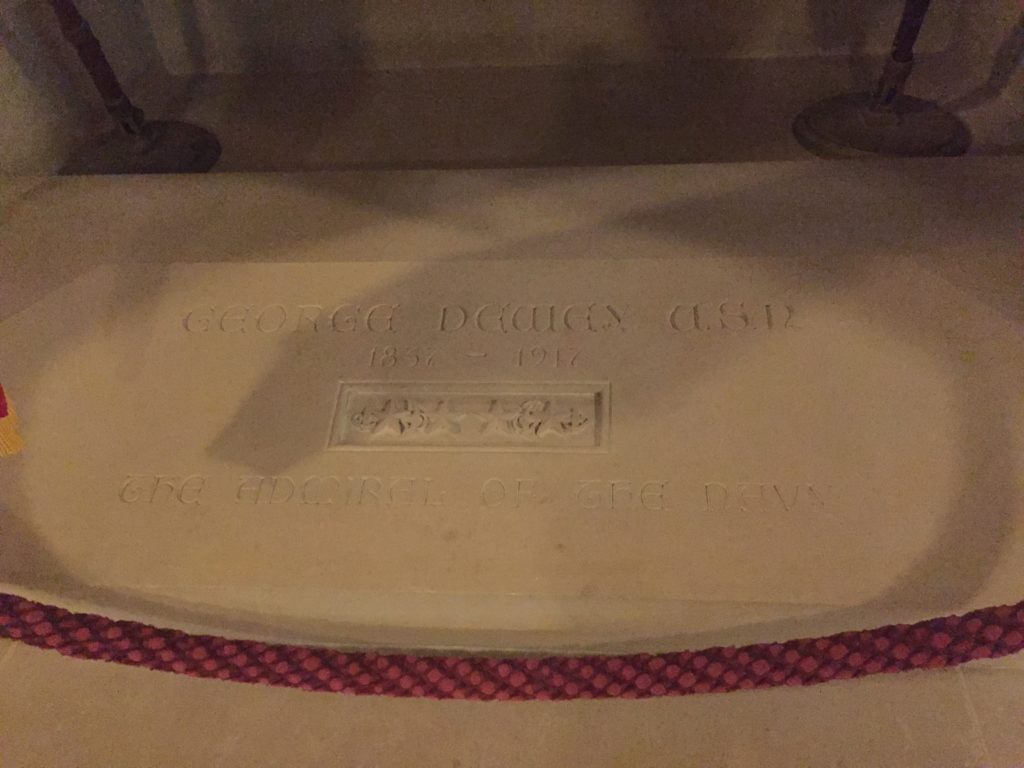Erik Visits an American Grave, Part 537
This is the grave of George Dewey.

Born in 1837 in Montpelier, Vermont, Dewey grew up in a strong Episcopalian family. His father was a doctor and insurance company founder. The young boy went to military school and then to the Naval Academy in 1854. He did very well and graduated high in his class. He rose relatively fast in the pre-Civil War Navy. In 1862, he distinguished himself serving under David Farragut, playing a leading role in capturing New Orleans and clearing the lower Mississippi of Confederate boats. He played a huge role at the Battle of Fort Fisher to take Wilmington in late 1864 and early 1865.
By the end of the war, Dewey had become a lieutenant commander. The postwar years were not very exciting for the U.S. Navy. The military routinely massively downsized when it wasn’t at war. Dewey taught at the Naval Academy between 1868 and 1870. He did this and that, commanded some fleets, etc., but there’s not much worth spending a lot of time on until 1898.
In 1896, Dewey asked to be Commander of the Asiatic Squadron. As this was as much politics as anything else, it was Theodore Roosevelt who pushed for Dewey’s promotion. In February 1898, Dewey and his fleet left for Hong Kong to inspect American boats located there. But they were quickly sidetracked to the Philippines, where Dewey led the Navy to take the Philippines from Spain. At first, he worked well with Emilio Aguinaldo, head of the Filipino independence forces, but soon enough the Filipinos realized the Americans were there to stay. By early 1899, Dewey threatened Aguinaldo with shelling Manila in order to allow American troops to land.
Dewey returned from the Philippines an American hero in a nation briefly embracing imperialism. He won all sorts of awards, was treated with parades, and was the living symbol of the new American dominance over the globe. Dewey was a Democrat and many Democrats wanted him to run for the presidency in 1900. He was interested, but he was also very much not a politician. He forgot that Americans hated Catholics and deeded the home he was granted by the nation to his Catholic wife. He proclaimed that the nation would soon go to war with Germany, which was true enough but not what people wanted to hear. The presidential ambitions went nowhere. Instead, he spent most of the rest of his life as a senior figure promoting the development of the Navy, including the submarine. He died in 1917.
George Dewey is buried in the National Cathedral, Washington, D.C. He was originally buried in Arlington, but his wife had him moved to the Cathedral in 1925.
If you would like this series to visit other naval officers, you can donate to cover the required expenses here. John Paul Jones is in Annapolis and John Barry is in Philadelphia. Previous posts in this series are archived here.


